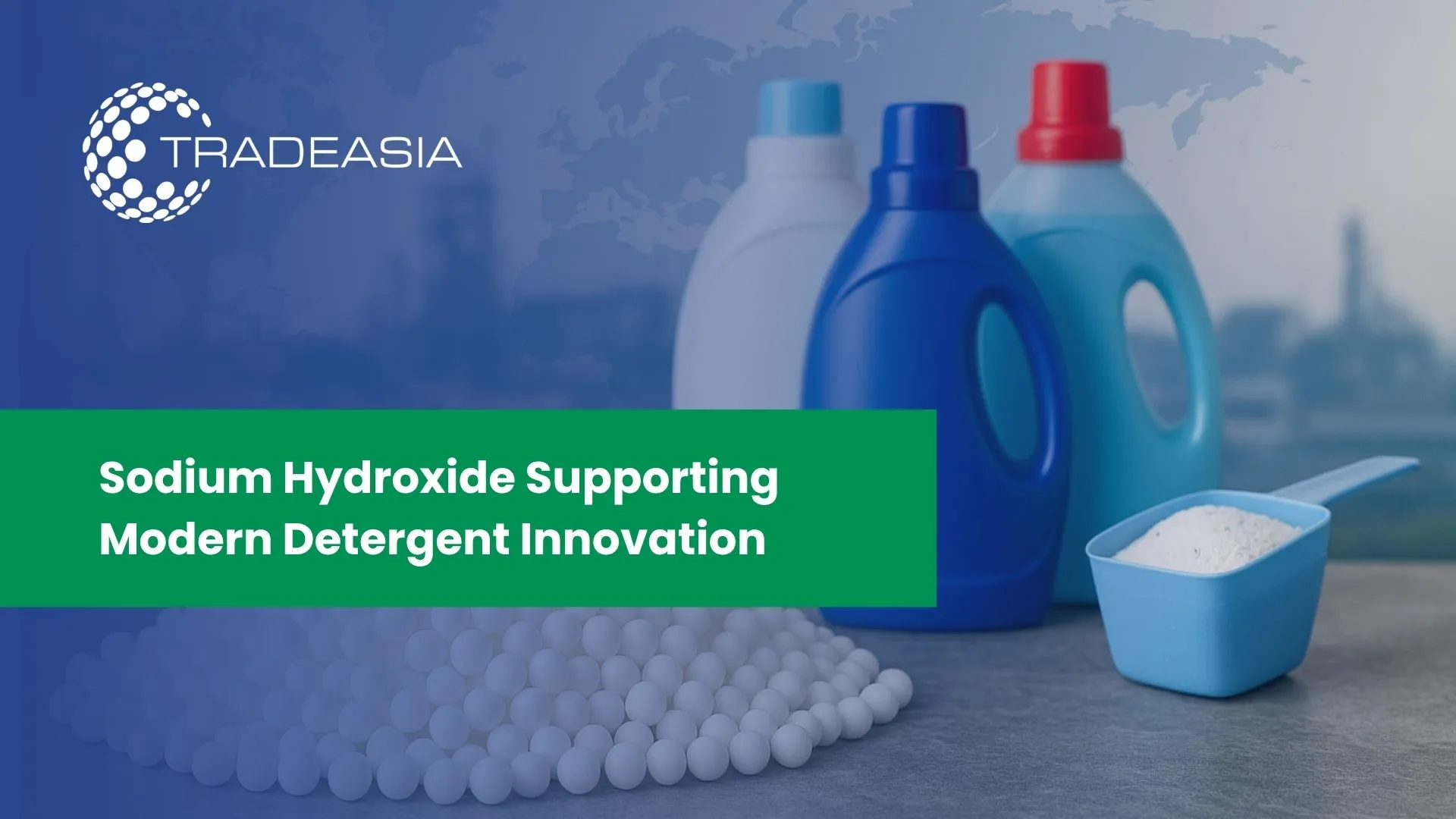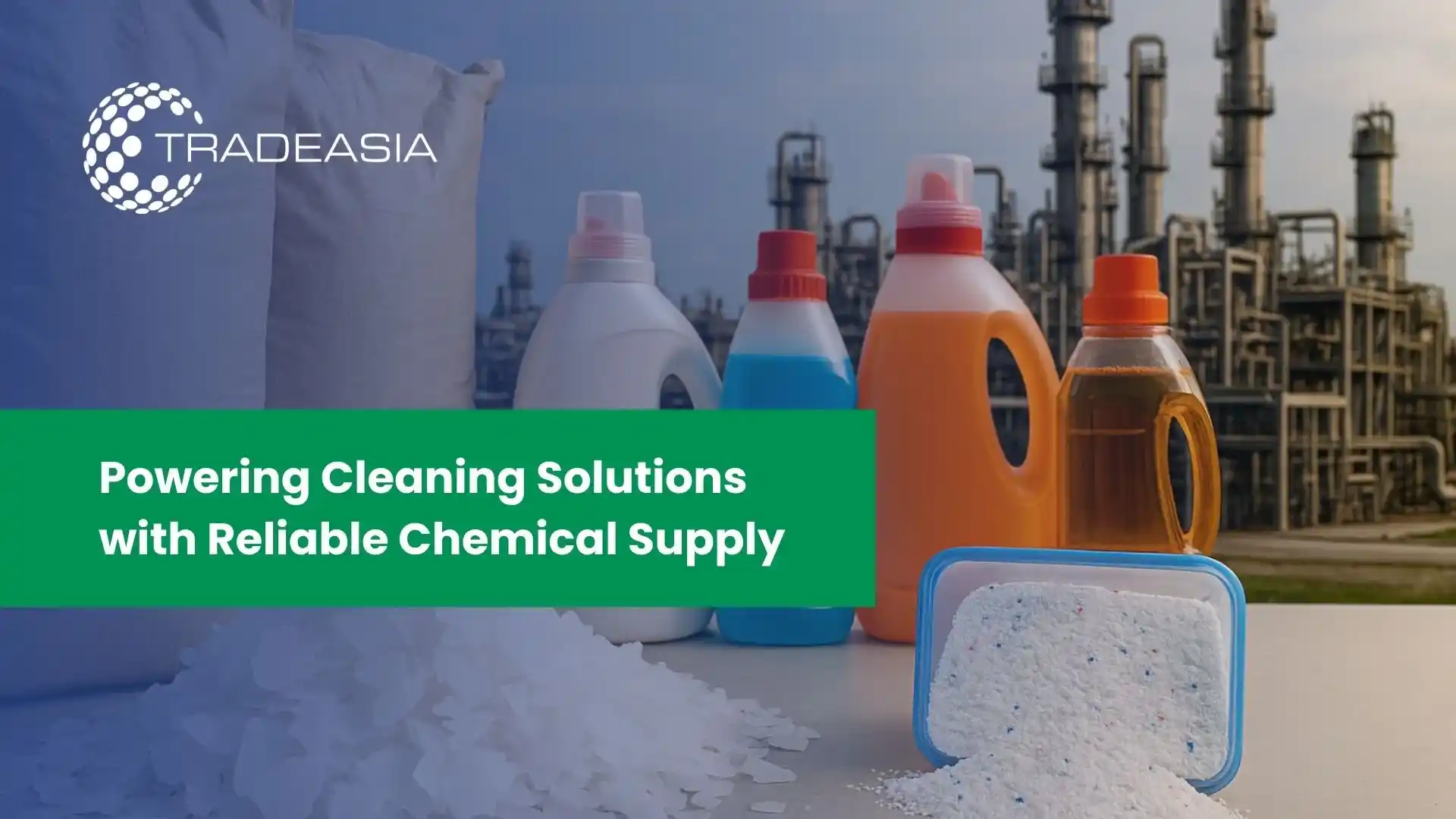Introduction to Caustic Soda Pearls
Caustic soda pearls, also known as sodium hydroxide pearls (NaOH), are among the most essential chemicals in modern manufacturing. Their versatility and purity make them ideal for a range of applications, particularly in detergent and cleaning products, where they function as a pH adjuster, saponification agent, and cleaning enhancer.
Produced by evaporating caustic soda liquid into a solid bead form, caustic soda pearls offer superior handling, storage, and transportation advantages. They dissolve easily in water, providing a concentrated source of alkalinity crucial for the detergent industry.
As global demand for hygiene, household care, and industrial cleaning products rises, the role of caustic soda pearls becomes increasingly significant. Their application in detergent manufacturing aligns with both performance optimization and environmental compliance, making them a cornerstone of the modern chemical supply chain.
Chemical Properties and Industrial Relevance
Caustic soda pearls are highly alkaline compounds that readily react with fats and oils to form soap through the saponification process. This property has made them indispensable in detergent formulation and surface cleaning solutions.
Their uniform spherical form ensures easy dissolution and precise dosing during industrial processing. Unlike flakes or liquid forms, caustic soda pearls minimize dust and moisture absorption, improving operational safety and product consistency.
Industrially, sodium hydroxide also plays roles beyond detergents such as in paper production, textiles, alumina refining, and water treatment. Yet, within detergents, its function as a strong base that neutralizes acidic impurities and enhances surfactant performance remains one of the most critical applications driving global demand.
Role of Caustic Soda Pearls in Detergent Manufacturing
In detergent production, caustic soda pearls serve as both a reaction agent and a formulation stabilizer. They are used to hydrolyze fats into fatty acids and glycerol, a fundamental process in soap making. These fatty acids are then neutralized to form surfactants the cleaning backbone of modern detergents.
Additionally, caustic soda pearls contribute to pH balance control, ensuring detergent formulations remain effective across diverse water hardness and temperature conditions. This feature enhances washing efficiency, particularly in liquid and powder detergents for both household and industrial use.
Their role also extends to grease and stain removal, improving detergent performance in high-demand markets such as hospitality, food processing, and automotive cleaning. The combination of functionality, cost-efficiency, and global availability has solidified caustic soda pearls’ dominance in detergent manufacturing worldwide.
Global Market Growth Overview (2025 - 2035)
The global market for caustic soda pearls is projected to grow steadily between 2025 and 2035, driven by increasing demand for cleaning and sanitation products. The expansion of consumer goods sectors in developing economies, coupled with rising hygiene awareness post-pandemic, has amplified detergent consumption globally.
According to reports from Mordor Intelligence and IMARC Group, the global caustic soda market is expected to register a CAGR of around 3.5–4% through 2035, with detergent applications contributing significantly to this growth. Asia-Pacific continues to dominate production and consumption due to its vast manufacturing base and population-driven demand.
Singapore, positioned strategically between major producers like China, India, and Indonesia, plays a crucial role in facilitating regional trade and distribution. Its world-class logistics infrastructure ensures that global manufacturers can source high-quality caustic soda pearls efficiently and sustainably.
Demand Drivers Across Detergent and Cleaning Sectors
The rising emphasis on cleanliness, hygiene, and sanitation has been a major driver for caustic soda pearls in the detergent market. From household cleaning agents to industrial washing solutions, the versatility of this chemical supports consistent product performance and safety.
In addition, the expansion of industrial cleaning particularly in pharmaceuticals, healthcare, and food manufacturing continues to drive caustic soda consumption. These industries rely on high-purity alkaline agents for sterilization and residue removal.
Moreover, urbanization and rising disposable incomes in emerging economies have boosted the sales of packaged detergents. As consumer preferences shift toward concentrated and liquid formulations, the demand for caustic soda pearls known for their controlled reactivity and easy handling continues to rise globally.
Key Regional Trends in Global Supply and Consumption
The Asia-Pacific region dominates caustic soda production, with major outputs from China, India, Japan, and South Korea. This dominance is supported by robust industrial infrastructure and an expanding detergent sector catering to both domestic and export markets.
Europe and North America are witnessing steady demand, driven by the cleaning products and pulp-and-paper industries. However, environmental regulations are influencing a shift toward cleaner, energy-efficient production technologies in caustic soda plants.
Meanwhile, the Middle East and Southeast Asia are emerging as key players in trade and re-export. Singapore’s port, for instance, acts as a vital hub connecting global detergent chemical suppliers with manufacturers in Africa and Latin America regions experiencing strong detergent market growth due to expanding population and industrialization.
Technological Developments in Production and Quality
Technological advancements in chlor-alkali processes have significantly improved caustic soda production efficiency. Modern membrane cell technologies, replacing older mercury and diaphragm cells, enable reduced energy consumption and minimize environmental emissions.
Producers are also investing in automated granulation and drying systems to enhance the uniformity and solubility of caustic soda pearls. Consistent particle size improves operational handling in detergent factories, ensuring better chemical dispersion during production.
Quality assurance remains paramount. Certified suppliers follow ISO and REACH compliance to ensure that caustic soda pearls meet international safety and purity standards. This commitment to quality supports the growing expectations of global detergent manufacturers that prioritize reliability and sustainability.
Sustainability and Green Chemistry in Caustic Soda Production
As the chemical industry transitions toward sustainability, caustic soda production is increasingly guided by green chemistry principles. Manufacturers are investing in renewable energy sources and improved electrolysis methods that reduce carbon emissions and wastewater generation.
The recovery and recycling of brine solutions, coupled with energy-efficient chlor-alkali processes, have become standard practices in major production plants. These efforts significantly reduce environmental impact while maintaining high output efficiency.
Furthermore, caustic soda pearls contribute to the detergent industry’s own sustainability goals. By improving detergent concentration, efficiency, and biodegradability, they help reduce packaging waste and transportation emissions making them part of the global shift toward circular and eco-responsible manufacturing.
Challenges and Competitive Landscape
Despite strong global demand, the caustic soda industry faces challenges related to energy costs, regulatory pressures, and raw material logistics. The production process is energy-intensive, making costs vulnerable to fluctuations in electricity and raw salt prices.
Environmental compliance adds another layer of complexity, especially in regions enforcing strict emission and effluent standards. Manufacturers must continuously upgrade their facilities to meet global environmental expectations while maintaining competitiveness.
The competitive landscape is characterized by both large multinational producers (such as Dow, OxyChem, and Tata Chemicals) and regional suppliers across Asia and the Middle East. Singapore’s position as a chemical trading hub allows suppliers to bridge global demand with sustainable, certified sources, offering flexibility in both pricing and logistics.
Future Opportunities and Market Outlook
Looking ahead, the global detergent industry’s growth driven by innovation in eco-friendly and concentrated formulations will continue to create opportunities for caustic soda pearl suppliers. The transition toward sustainable manufacturing presents a pathway for producers to differentiate themselves through cleaner production processes.
Emerging markets in Africa, Southeast Asia, and Latin America offer significant growth potential. As infrastructure and consumer markets develop, the need for affordable yet effective detergents will propel demand for caustic soda pearls as a key raw material.
By 2035, the integration of digital supply chain systems and transparent traceability will reshape global trade, ensuring better monitoring of quality, sustainability, and compliance. Caustic soda pearls, with their versatility and essential role in detergent production, will remain a cornerstone chemical supporting industrial progress and global hygiene goals.
Conclusion
Caustic soda pearls remain one of the most vital raw materials driving innovation and efficiency in the global detergent chemicals market. Their unique combination of reactivity, purity, and ease of handling ensures that they continue to be indispensable in both traditional soap making and modern high-performance cleaning formulations.
As global populations expand and hygiene standards rise, the demand for detergents and consequently caustic soda pearls will keep increasing. The ongoing evolution toward eco-friendly production, combined with advancements in chlor-alkali technology, will further enhance both sustainability and economic efficiency across the value chain.
For producers, distributors, and manufacturers, the future of caustic soda pearls lies in balancing performance with environmental responsibility. By embracing energy-efficient processes, adopting circular economy principles, and maintaining strict quality standards, the detergent industry can secure long-term growth while contributing to a cleaner and more sustainable global economy. To learn more about sourcing high-quality caustic soda pearls or partnering for sustainable detergent chemical solutions, contact Tradeasia International to connect with our experts today.
References


Leave a Comment